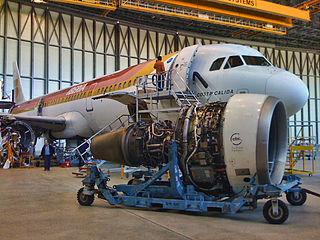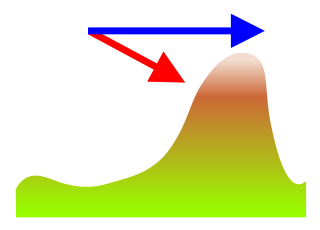Related Research Articles

The Federal Aviation Administration (FAA) is a U.S. federal government agency within the U.S. Department of Transportation which regulates civil aviation in the United States and surrounding international waters. Its powers include air traffic control, certification of personnel and aircraft, setting standards for airports, and protection of U.S. assets during the launch or re-entry of commercial space vehicles. Powers over neighboring international waters were delegated to the FAA by authority of the International Civil Aviation Organization.
The Federal Aviation Regulations (FARs) are rules prescribed by the Federal Aviation Administration (FAA) governing all aviation activities in the United States. The FARs comprise Title 14 of the Code of Federal Regulations. A wide variety of activities are regulated, such as aircraft design and maintenance, typical airline flights, pilot training activities, hot-air ballooning, lighter-than-air aircraft, man-made structure heights, obstruction lighting and marking, model rocket launches, commercial space operations, model aircraft operations, Unmanned Aircraft Systems (UAS) and kite flying. The rules are designed to promote safe aviation, protecting pilots, flight attendants, passengers and the general public from unnecessary risk.

An aircraft mechanic, aviation mechanic or aircraft maintenance technician (AMT) is a tradesperson who carries out aircraft maintenance and repairs. AMTs inspect and perform or supervise maintenance, preventive maintenance, repairs and alteration of aircraft and aircraft systems.
An Airworthiness Directive is a notification to owners and operators of certified aircraft that a known safety deficiency with a particular model of aircraft, engine, avionics or other system exists and must be corrected.

An airborne collision avoidance system operates independently of ground-based equipment and air traffic control in warning pilots of the presence of other aircraft that may present a threat of collision. If the risk of collision is imminent, the system recommends a maneuver that will reduce the risk of collision. ACAS standards and recommended practices are mainly defined in annex 10, volume IV, of the Convention on International Civil Aviation. Much of the technology being applied to both military and general aviation today has been undergoing development by NASA and other partners since the 1980s.

The Aeronca L-3 group of observation and liaison aircraft were used by the United States Army Air Corps in World War II. The L-3 series were adapted from Aeronca's pre-war Tandem Trainer and Chief models.

An electronic flight bag (EFB) is an electronic information management device that helps flight crews perform flight management tasks more easily and efficiently with less paper providing the reference material often found in the pilot's carry-on flight bag, including the flight-crew operating manual, navigational charts, etc. In addition, the EFB can host purpose-built software applications to automate other functions normally conducted by hand, such as take-off performance calculations. The EFB gets its name from the traditional pilot's flight bag, which is typically a heavy documents bag that pilots carry to the cockpit.

Ultralight aircraft exist outside of the United States. In most countries, ultralights are a class of aircraft. A completely different legal concept is valid within the USA. The FAA makes explicitly clear, that ultralight vehicles are no aircraft, are not regulated as aircraft, and are exempt from aircraft rules. Instead, they are treated as powersport items and have to follow their own ruleset, FAR-103, which is the most compact aviation regulation in existence. It can be printed on the front- and backside of a single piece of paper.
An aircraft part is an article or component approved for installation on a type-certificated aircraft. Approval for these parts is derived from the jurisdictions of the countries that an aircraft is based. In the United States, the Federal Aviation Administration oversees the approval for these parts under Federal Aviation Regulation Part 21.
Parts Manufacturer Approval (PMA) is an approval granted by the United States Federal Aviation Administration (FAA) to a manufacturer of aircraft parts.

In aviation, airworthiness is the measure of an aircraft's suitability for safe flight. Initial airworthiness is demonstrated by a certificate of airworthiness issued by the civil aviation authority in the state in which the aircraft is registered, and continuing airworthiness is achieved by performing the required maintenance actions.

Aircraft maintenance is the performance of tasks required to ensure the continuing airworthiness of an aircraft or aircraft part, including overhaul, inspection, replacement, defect rectification, and the embodiment of modifications, compliance with airworthiness directives and repair.

In aviation, a terrain awareness and warning system (TAWS) is generally an on-board system aimed at preventing unintentional impacts with the ground, termed "controlled flight into terrain" accidents, or CFIT. The specific systems currently in use are the ground proximity warning system (GPWS) and the enhanced ground proximity warning system (EGPWS). The U.S. Federal Aviation Administration (FAA) introduced the generic term TAWS to encompass all terrain-avoidance systems that meet the relevant FAA standards, which include GPWS, EGPWS and any future system that might replace them.

In aviation, V-speeds are standard terms used to define airspeeds important or useful to the operation of all aircraft. These speeds are derived from data obtained by aircraft designers and manufacturers during flight testing for aircraft type-certification. Using them is considered a best practice to maximize aviation safety, aircraft performance, or both.
An electrical wiring interconnect system (EWIS) is the wiring system and components for a complex system. The term originated in the aviation industry but was originally designated as Electrical Interconnection Systems (EIS). The change from EIS to EWIS was done to emphasize the focus on the actual wires and wiring of the systems throughout aircraft.

The Directorate General of Civil Aviation (DGCA) is a statutory body of the Government of India to regulate civil aviation in India. It became a statutory body under the Aircraft (Amendment) Act, 2020. The DGCA investigates aviation accidents and incidents, maintains all regulations related to aviation and is responsible for issuance of licenses pertaining to aviation like PPL's, SPL's and CPL's in India. It is headquartered along Sri Aurobindo Marg, opposite Safdarjung Airport, in New Delhi. The Government of India is planning to replace the organisation with a Civil Aviation Authority (CAA), modelled on the lines of the American Federal Aviation Administration (FAA).

AC 25.1309–1 is an FAA Advisory Circular (AC) that identifies acceptable means for showing compliance with the airworthiness requirements of § 25.1309 of the Federal Aviation Regulations. Revision A was released in 1988. In 2002, work was done on Revision B, but it was not formally released; the result is the Rulemaking Advisory Committee-recommended revision B-Arsenal Draft (2002). The Arsenal Draft is "considered to exist as a relatively mature draft". The FAA and EASA have subsequently accepted proposals by type certificate applicants to use the Arsenal Draft on development programs.

AerSale, Inc. is a Coral Gables, Florida-based global supplier of aftermarket commercial jet aircraft, engines, Original Equipment Manufacturer (OEM) used serviceable material, maintenance, repair and overhaul (MRO), and aeronautical engineering services to passenger and cargo airlines, government entities, leasing companies, multinational OEMs, and independent MROs.

FAA Order 8110.37 , Designated Engineering Representative (DER) Handbook, is a handbook of procedures, technical guidelines, limitations of authority, tools, and resources for Designated Engineering Representatives (DERs), who are appointees of the Federal Aviation Administration. Both DERs and the FAA offices managing them have individual and mutual roles and responsibilities in the certifications of safety of aircraft and aviation systems. This handbook provides a better understanding of these roles. Although intended for the roles of DERs, this order may be useful to ODA engineering Unit Members, who are effectively DERs managed by aviation manufacturers rather than by the FAA.
References
- ↑ Ron Wanttaja (2006). Airplane Ownership. McGraw Hill Professional. p. 219. ISBN 978-0-07-162814-3.
- ↑ "Search of Electronic Code of Federal Regulations". United States National Archives and Records Administration. Archived from the original on 2010-04-01. Retrieved 2012-04-04.
- ↑ "Yellow Tag vs. FAA 8130-3". Avionics Masters. Retrieved 2012-04-04.
- ↑ O'Brien, Bill (7 October 2014). "FAA Feedback: The Yellow Tag". Aviation Pros. Retrieved 31 March 2022.
- ↑ Air Corps Maintenance System. Department of Mechanics, Army Air Corps. 24 January 1941. pp. 120–124. Retrieved 31 March 2022.